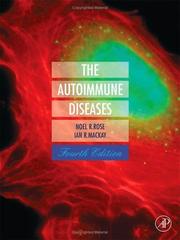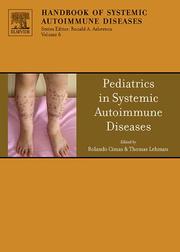| Listing 1 - 10 of 388 | << page >> |
Sort by
|
Multi
ISBN: 9780128145739 0128145730 9780128145722 Year: 2020 Publisher: London, England : Academic Press,
Abstract | Keywords | Export | Availability | Bookmark
 Loading...
Loading...Choose an application
- Reference Manager
- EndNote
- RefWorks (Direct export to RefWorks)
Book
Year: 2020 Publisher: Basel, Switzerland : MDPI - Multidisciplinary Digital Publishing Institute,
Abstract | Keywords | Export | Availability | Bookmark
 Loading...
Loading...Choose an application
- Reference Manager
- EndNote
- RefWorks (Direct export to RefWorks)
The cytoplasm of Gram-negative bacteria is bound by three layers: an inner membrane, a layer of peptidoglycan, and an outer membrane. The outer membrane is an asymmetric lipidic bilayer, with phospholipids on its inner surface and lipopolysaccharides (LPSs) on the outside, with the latter being the major component of the outer leaflet and covering nearly three-quarters of the total outer cell surface. All LPSs possess the same general chemical architecture independently of bacterial activity (pathogenic, symbiotic, commensal), ecological niche (human, animal, soil, plant, water), or growth conditions. Endotoxins are large amphiphilic molecules consisting of a hydrophilic polysaccharide component and a covalently bound hydrophobic and highly conserved lipid component, termed lipid A (the endotoxin subunit). The polysaccharide component can be divided into two subdomains: the internal and conserved core region as well as the more external and highly variable O-specific chain, also referred to as the O-antigen due to its immunogenic properties. LPSs are endotoxins, one of the most potent class of activators of the mammalian immune system; they can be released from cell surfaces of bacteria during multiplication, lysis, and death. LPS can act through its biological center (lipid A component) on various cell types, of which macrophages and monocytes are the most important.
Book
Year: 2015 Publisher: [Place of publication not identified] : Frontiers Media SA,
Abstract | Keywords | Export | Availability | Bookmark
 Loading...
Loading...Choose an application
- Reference Manager
- EndNote
- RefWorks (Direct export to RefWorks)
Lipids are best known as energy storing molecules and core-components of cellular membranes, but can also act as mediators of cellular signaling. This is most prominently illustrated by the paramount importance of the phospholipase C (PLC) and phosphoinositide 3-kinase (PI3K) signaling pathways in many cells, including T cells and cancer cells. Both of these enzymes use the lipid phosphatidylinositol(4,5)bisphosphate (PIP2) as their substrate. PLCs produce the lipid product diacylglycerol (DAG) and soluble inositol(1,4,5)trisphosphate (IP3). DAG acts as a membrane tether for protein kinase C and RasGRP proteins. IP3 is released into the cytosol and controls calcium release from internal stores. The PI3K lipid product phosphatidylinositol(3,4,5)trisphosphate (PIP3) controls signaling by binding and recruiting effector proteins such as Akt and Itk to cellular membranes. Recent research has unveiled important signaling roles for many additional phosphoinositides and other lipids. The articles in this volume highlight how multiple different lipids govern T cell development and function through diverse mechanisms and effectors. In T cells, lipids can orchestrate signaling by organizing membrane topology in rafts or microdomains, direct protein function through covalent lipid-modification or non-covalent lipid binding, act as intracellular or extracellular messenger molecules, or govern T cell function at the level of metabolic regulation. The cellular activity of certain lipid messengers is moreover controlled by soluble counterparts, exemplified by symmetric PIP3/inositol(1,3,4,5)tetrakisphosphate (IP4) signaling in developing T cells. Not surprisingly, lipid producing and metabolizing enzymes have gained attention as potential therapeutic targets for immune disorders, leukemias and lymphomas.

ISBN: 9780125959612 0125959613 9780080454740 0080454747 1280628669 9781280628665 9786610628667 6610628661 Year: 2006 Publisher: Amsterdam Boston Elsevier / Academic Press
Abstract | Keywords | Export | Availability | Bookmark
 Loading...
Loading...Choose an application
- Reference Manager
- EndNote
- RefWorks (Direct export to RefWorks)
Since publication of the Third Edition in 1998, the understanding of the immune mechanisms underlying autoimmunity and autoimmune disease has significantly deepened and broadened. This Fourth Edition incorporates new material and combines common themes underlying inductive and effector mechanisms and therapies that relate generally to the autoimmune disorders. It discusses the biological basis of disease at genetic, molecular, cellular, and epidemiologic levels.New to This Edition:* Tissue-specific interventions to arrest or ""cure"" autoimmune disease* Bone marrow eradication
Book
ISBN: 1616685190 9781616685195 1616680075 9781616680077 Year: 2010 Publisher: Hauppauge, N.Y. : Nova Science Publishers,
Abstract | Keywords | Export | Availability | Bookmark
 Loading...
Loading...Choose an application
- Reference Manager
- EndNote
- RefWorks (Direct export to RefWorks)
Autoimmune diseases. --- Autoimmunologic diseases --- Autoimmunity --- Immunologic diseases
Book
ISBN: 9535121340 9535172417 Year: 2015 Publisher: IntechOpen
Abstract | Keywords | Export | Availability | Bookmark
 Loading...
Loading...Choose an application
- Reference Manager
- EndNote
- RefWorks (Direct export to RefWorks)
Autoimmunity is defined as an immune response against a self-antigen. This abnormal immune response can lead to tissue damage and to the development of autoimmune disease. From organ-specific autoimmune diseases, such as myasthenia gravis, to non-organ-specific, such as systemic lupus erythematosus, autoimmune diseases represent a heterogeneous group of disorders which affect approximately 6% of the population. The pathogenesis of many autoimmune diseases is complex and remains not completely understood. The aim of this book is to present current knowledge regarding pathogenic mechanisms of autoimmune diseases, clinical aspects of specific autoimmune diseases, like vitiligo, celiac disease and autoimmune liver disease, as well as insights regarding specific therapies.
Autoimmune diseases --- Treatment. --- Autoimmunologic diseases --- Autoimmunity --- Immunologic diseases --- Immunology

ISBN: 1281059854 9786611059859 0080553443 0444529713 9780444529718 9780080553443 Year: 2008 Publisher: Amsterdam ; London : Elsevier,
Abstract | Keywords | Export | Availability | Bookmark
 Loading...
Loading...Choose an application
- Reference Manager
- EndNote
- RefWorks (Direct export to RefWorks)
Many of the systemic autoimmune diseases seen in children are different from those seen in adults making them a special problem for physicians and scientists who care for the affected children and study their diseases. Benefiting both pediatric and adult rheumatologists, as well as physicians from other specialties, this volume covers the latest advances in pathogenesis and clinical management of common conditions seen in pediatric rheumatology practices.
Pediatrics --- Autoimmune diseases --- Autoimmunologic diseases --- Autoimmunity --- Immunologic diseases
Book
ISBN: 0323859755 0128243902 9780323859752 9780128243909 Year: 2022 Publisher: London, United Kingdom : Academic Press, an imprint of Elsevier,
Abstract | Keywords | Export | Availability | Bookmark
 Loading...
Loading...Choose an application
- Reference Manager
- EndNote
- RefWorks (Direct export to RefWorks)
Autoimmune diseases --- Treatment. --- Autoimmunologic diseases --- Autoimmunity --- Immunologic diseases
Book
ISBN: 1282761439 9786612761430 9814287105 9789814287104 9789814287098 9814287091 Year: 2010 Publisher: Singapore ; Hackensack, N.J. : World Scientific,
Abstract | Keywords | Export | Availability | Bookmark
 Loading...
Loading...Choose an application
- Reference Manager
- EndNote
- RefWorks (Direct export to RefWorks)
""Strategies for Protecting Your Child's Immune System"" is the first book to focus on prevention of environmental damage to the immune system of embryos, babies and older children. It provides expecting and existing parents, their families and physicians with science-based information to protect and proactively manage their child's immune system. Environmental exposures (pollutants, allergens, drugs, diet, physical factors) in the home, school and community can damage the developing immune system and increase the risk of lifelong chronic diseases such as allergies, asthma, type 1 diabetes, ce
Immune system --- Immunology --- Immunologic diseases --- Children --- Parenting. --- Diseases --- Immunological aspects
Book
ISBN: 1437737781 1437702716 1336236817 Year: 2010 Publisher: [St. Louis, Mo.] : Saunders/Elsevier,
Abstract | Keywords | Export | Availability | Bookmark
 Loading...
Loading...Choose an application
- Reference Manager
- EndNote
- RefWorks (Direct export to RefWorks)
Pediatric Allergy supplies the comprehensive guidance you need to diagnose, manage, and treat virtually any type of allergy seen in children. Drs. Leung, Sampson, Geha, and Szefler present the new full-color second edition, with coverage of the diagnosis and management of anaphylaxis, the immune mechanisms underlying allergic disease, the latest diagnostic tests, and more...in print and online at expertconsult.com. Treat the full range of pediatric allergic and immunologic diseases through clinically focused coverage relevant to both allergists and pediatricians. Unders
Allergy in children. --- Immunologic diseases in children. --- Pediatric immunopathology --- Children --- Pediatric allergy --- Allergy --- Immunologic diseases in children --- Diseases
| Listing 1 - 10 of 388 | << page >> |
Sort by
|

 Search
Search Feedback
Feedback About
About Help
Help News
News